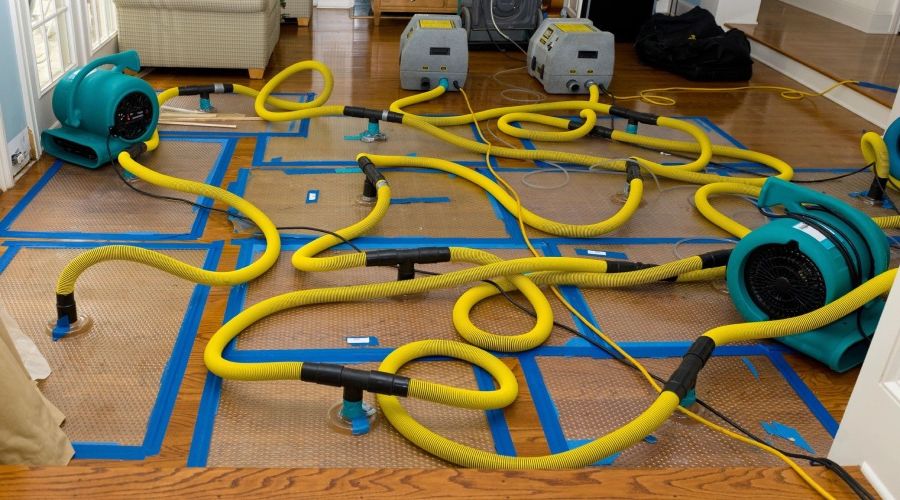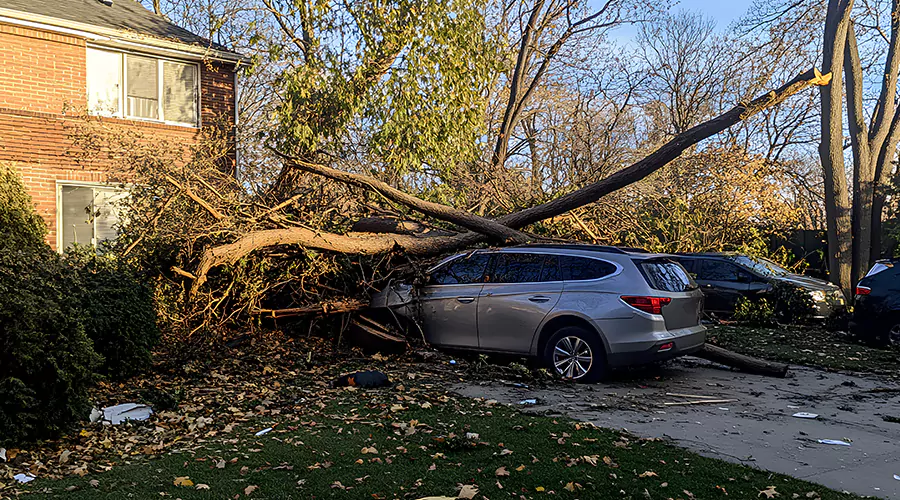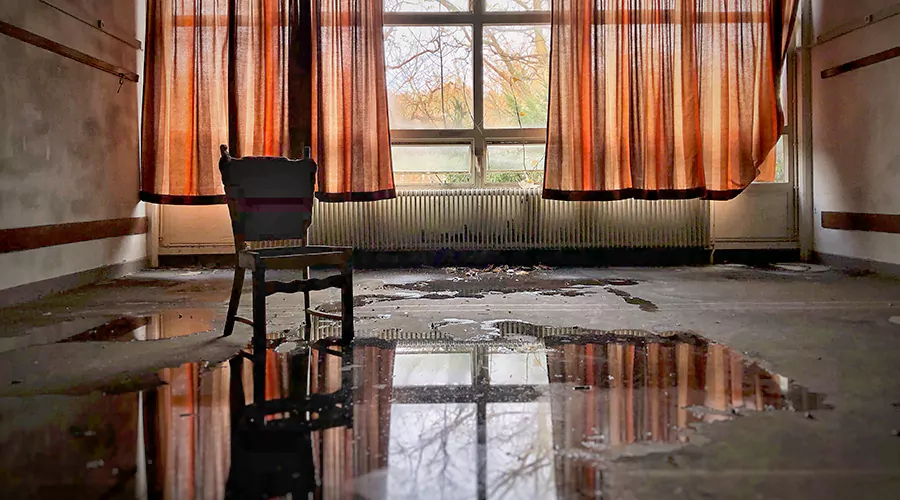A water-damaged wooden floor is caused by water or moisture intrusion into a wooden floor or subfloor, resulting in distortion, discolouration, or swelling. This damage can occur due to various causes, such as water leakage, flooding, or increased humidity in the community. If the water reaches the wooden floor surface, the wooden structures will expand and get warped up and swollen. Once left unchanged, water damage can lead to the rotting of the wood floor and the breeding of mildew and mould.
Water damage should not be left unattended, mainly when it affects a wooden floor. Without timely intervention, more serious complications might arise.
When dampened or soaked, water exposure can significantly damage the wood's physical strength. It may turn brown, lose strength and flexibility, and easily break. Hence, proper water damage cleanup and Restoration are mandatory.
Disadvantages of Water Damage
There are several inconveniences associated with water-damaged wood floors, and it is always advised that these problems be fixed as soon as possible to avoid complications. There are many disadvantages of water damage if not treated very well; those disadvantages are as follows:
Wood Structural damage:
It softens the wood and makes it more brittle, thus increasing its ability to crack or to break along the grain.
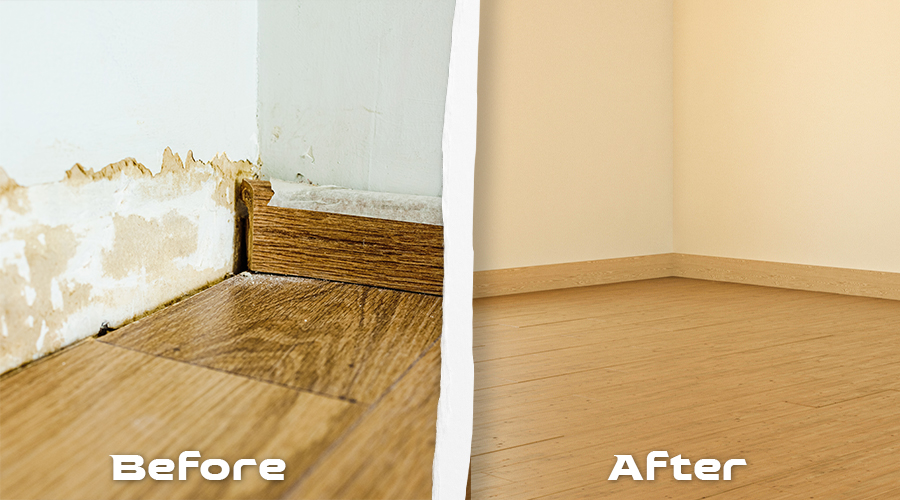
Mold and mildew growth under wooden flooring:
Severe water damage makes removing mould and mildew that may hide beneath the floor virtually impossible. This can cause health challenges for the dwellers and result in unpleasant smells in the home. Moisture from the water made the wood floor expand.
Increased risk of accidents:
Water damage can lead to structural weakening, mould growth, and health hazards. Exposure to water also increases the risk of accidents like slips, falls, and electrical hazards.
Decreased aesthetic appeal:
Water can stain, discolour, or even warp wood floors, making them unattractive and decreasing their value.
Increased costs:
Repairing water-swollen wooden floors costs a lot, even more so if the entire floor has been affected. This also covers the expenses involved in repairing, sanding, refinishing, or replacing the damaged area.
Steps to fix water-damaged swollen wood floor:
When wood floors are exposed to water, the wood becomes swollen and subsequently warped, and if not treated, it would mean more harm and danger. Here are some steps to fix water-damaged swollen wood floors:
Remove any standing water or moisture on the wooden floor:
The first measure of managing the situation is to drain or wipe out any stagnant water in the affected region. You can use a wet/dry vacuum or towels to sop up the water from the floor and ensure they are dried up perfectly.
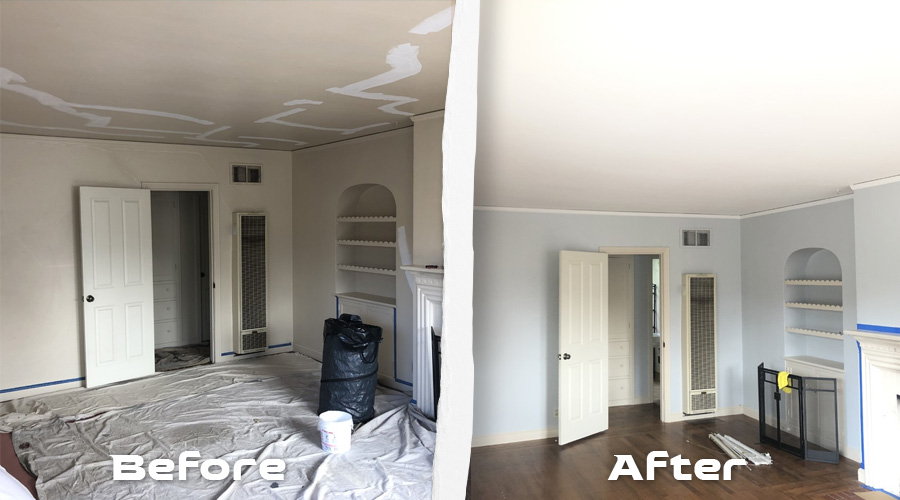
Dry the wooden floor:
Afterward, you should reduce the room's humidity as much as possible by using fans and dehumidifiers. Ensure the fans and dehumidifiers run until the wood is thoroughly dry, which may take several days.
Assess the damage:
After the wood floor is dried, please review the swelling and warping levels to decide on further action. If the damage has not gone too deep, sand the affected part and return it to its previous form.
Sand down the affected/damaged floor:
You can use a sander to remove the swollen and warped parts of the wood flooring. When you are done, the floor area should also be sanded to ensure a smooth surface.
Refinish the wood flooring:
When you have ground the affected area, you can stain the wooden floor to bring out the colour of the remaining floor. One of the best ways to renew it is by using a wood stain with a match of colour and sealant as needed.
Prevent future water damage:
If you want to avoid experiencing similar problems in the future, clean or repair all the water sources in your house. You can also fill a sealed or waterproof product for your floors so that water will not harm them again.
However, it is worth mentioning that a new section of the floor may be required for severe damage. In this kind of situation, a professional in flooring installation should do the job.


